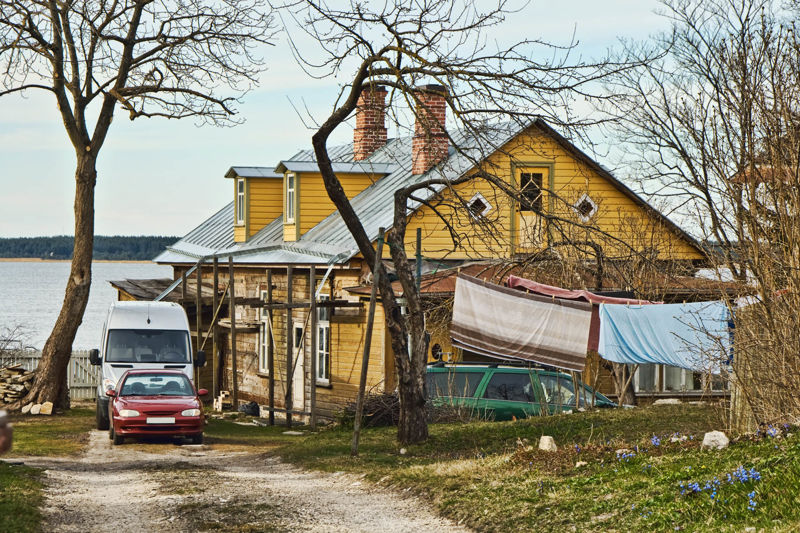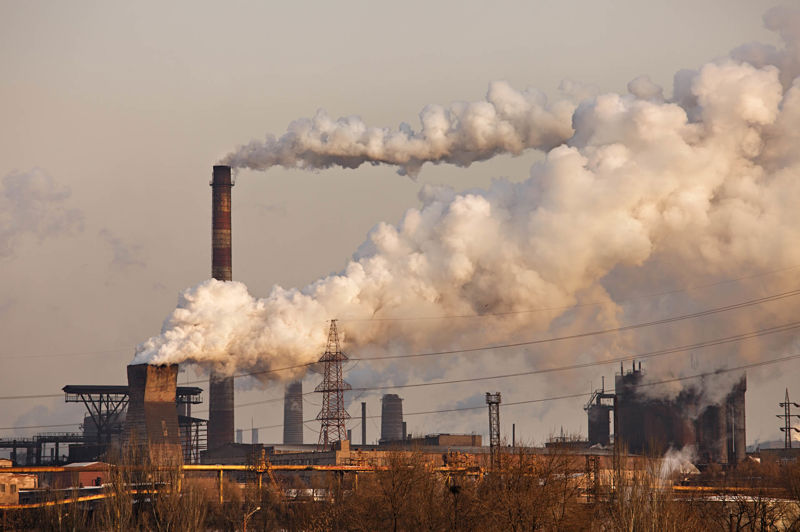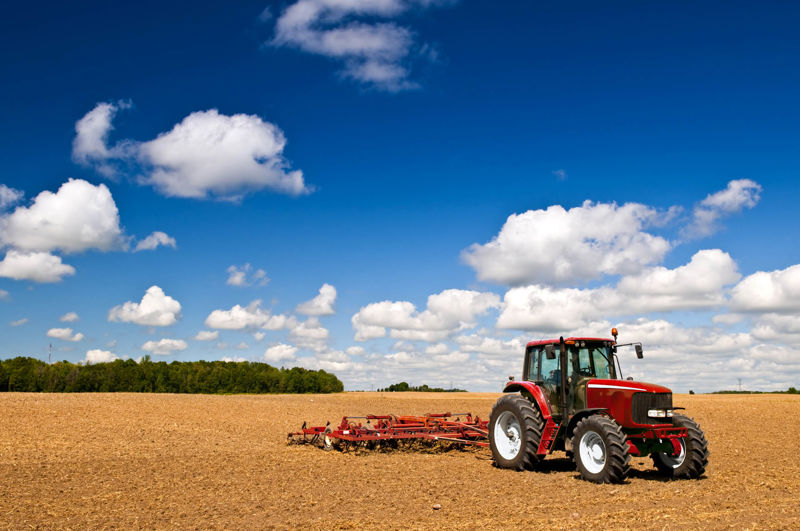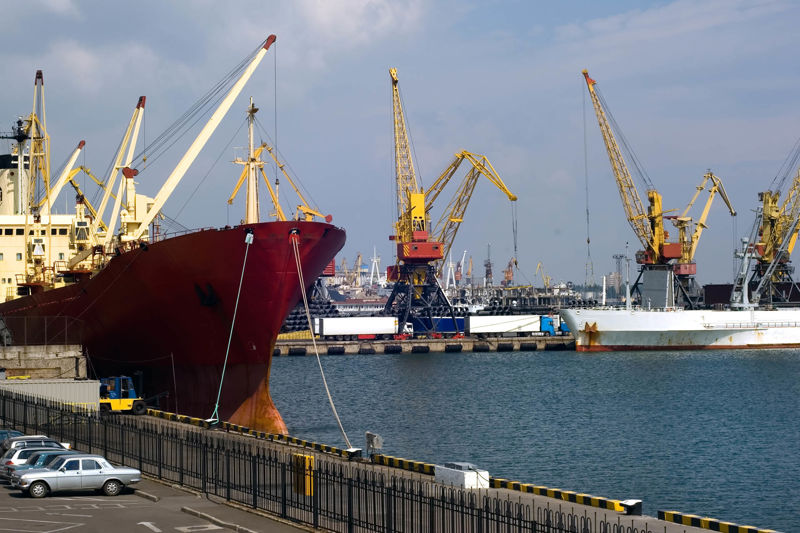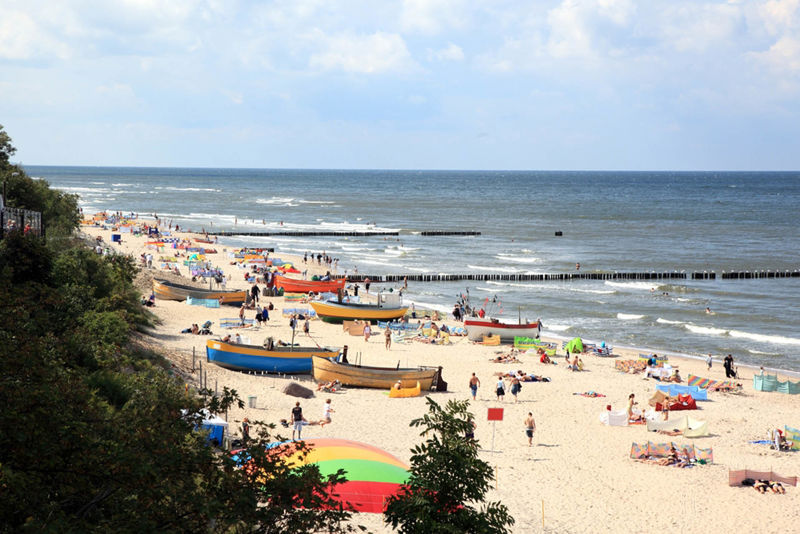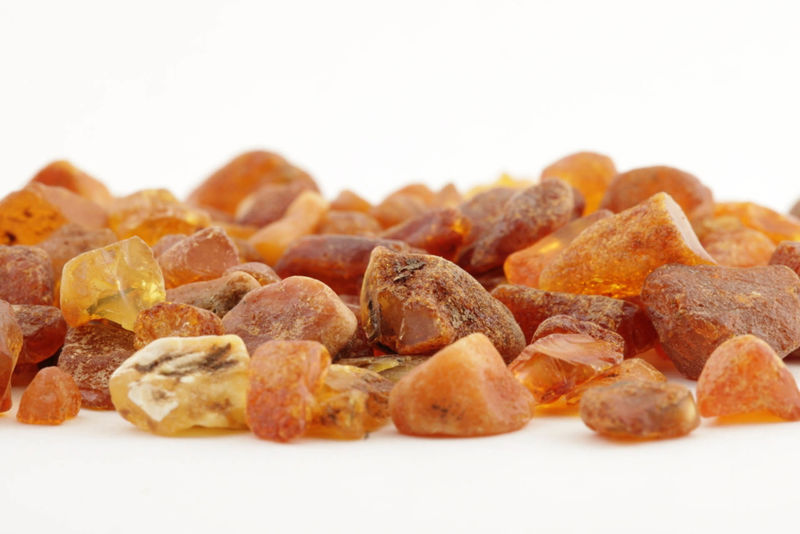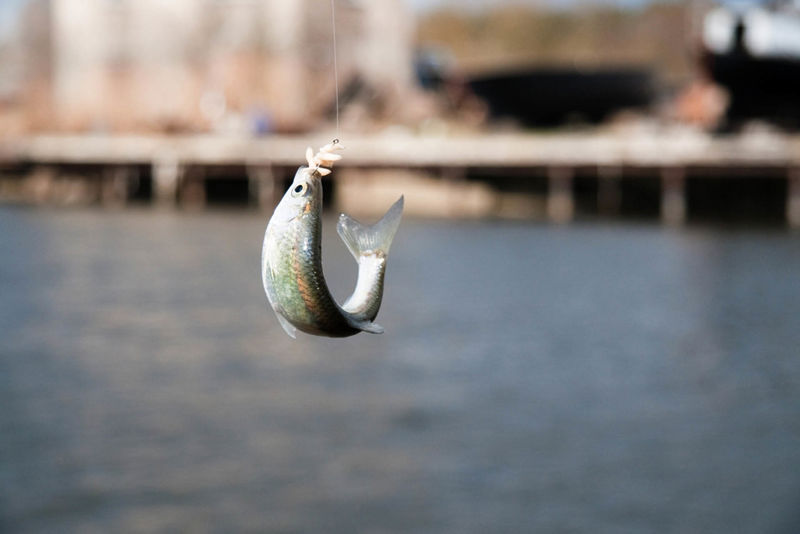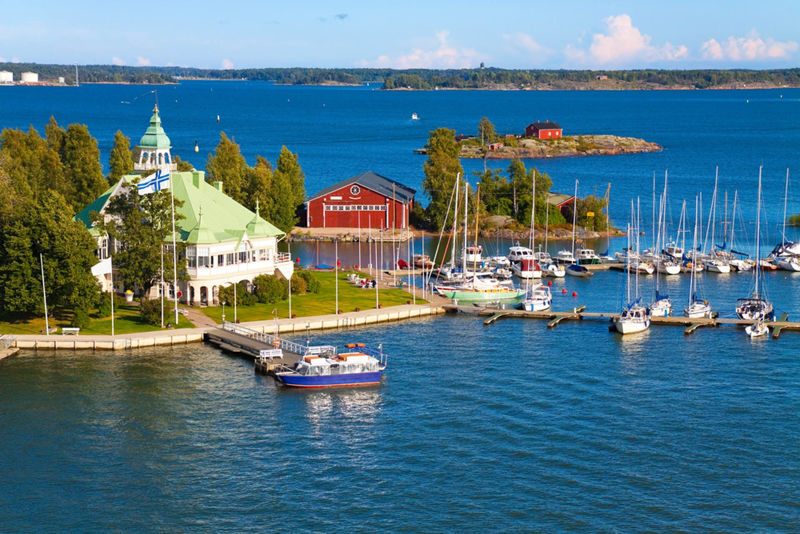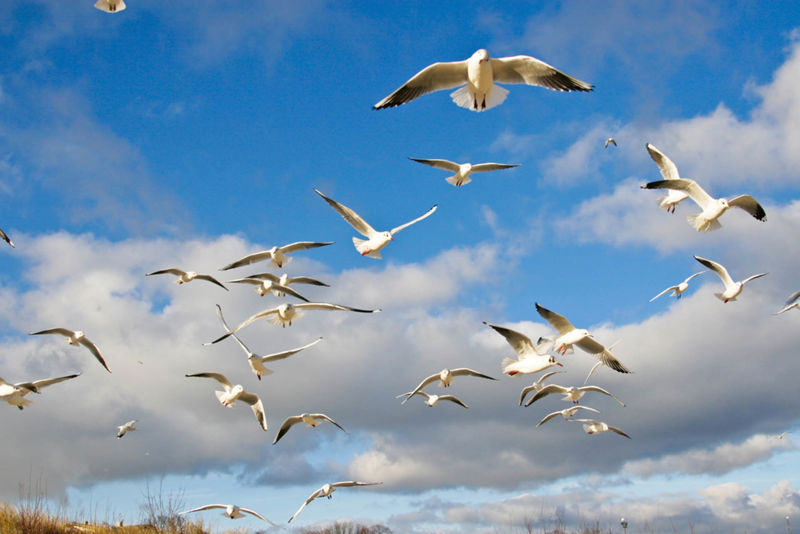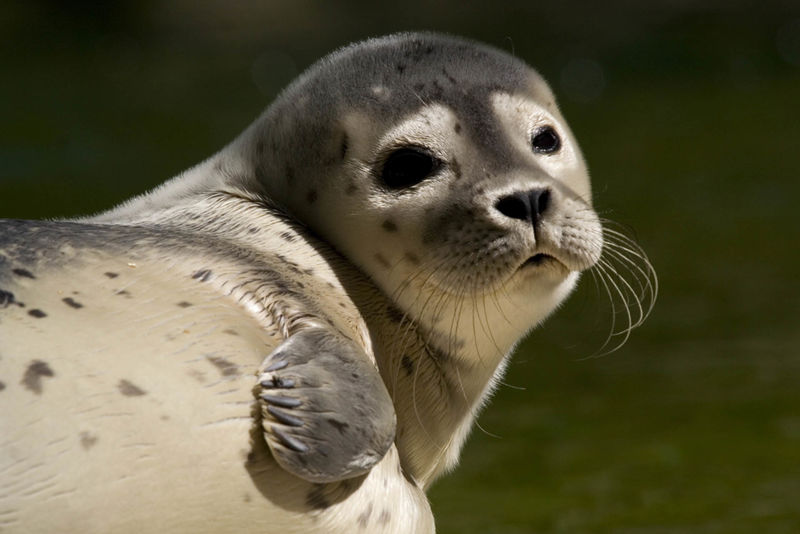- How fast does the water in the Baltic Sea get replaced?
- What pollutes the sea?
- What is being done to protect the Baltic Sea?
The Baltic Sea is the most polluted sea in the world
In the last century, industry and agriculture developed rapidly in the countries bordering the Baltic Sea. The population grew rapidly, and cities emerged on the coast. Until the 1950s, people were used to throwing their waste into bodies of water. Streams and rivers transported waste into the sea, where the pollution got diluted. However, the Baltic Sea is a semi-enclosed inland sea in which water changes very slowly - in about 30 years. This means that the pollution will remain there like in a bucket. Therefore, the Baltic Sea is the most polluted sea in the world. Let's see where this pollution originates from.
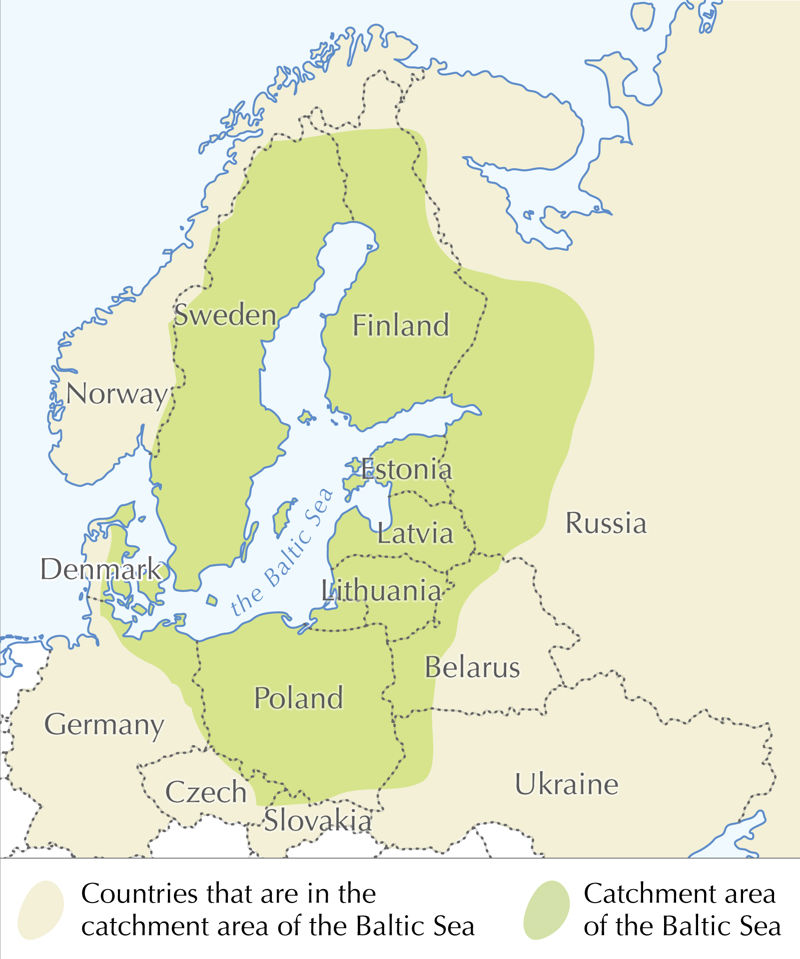
- The Baltic Sea is not connected to the world ocean. Therefore, all pollution entering the sea will remain there.
- The Baltic Sea is connected to the world ocean through narrow straits. Therefore, the water in the Baltic Sea changes slowly.
Agriculture
Today, fertilisers are widely used in agriculture. When it is very rainy during fertilisation, and there are no plants to hold the soil in place, the water washes fertilisers, herbicides, and pesticides out of the soil into water bodies. All substances that end up in flowing water eventually end up in the sea. Fertilisers are plant nutrients that cause algae and other aquatic plants to grow excessively when released into the water. When aquatic plants and algae die and decompose, oxygen is sucked from the water body, and aquatic animals die. Huge amounts of nutrients end up in water bodies from liquid manure spread as fertiliser on the fields, so enough oxygen is lost that animals cannot enter that water without dying.
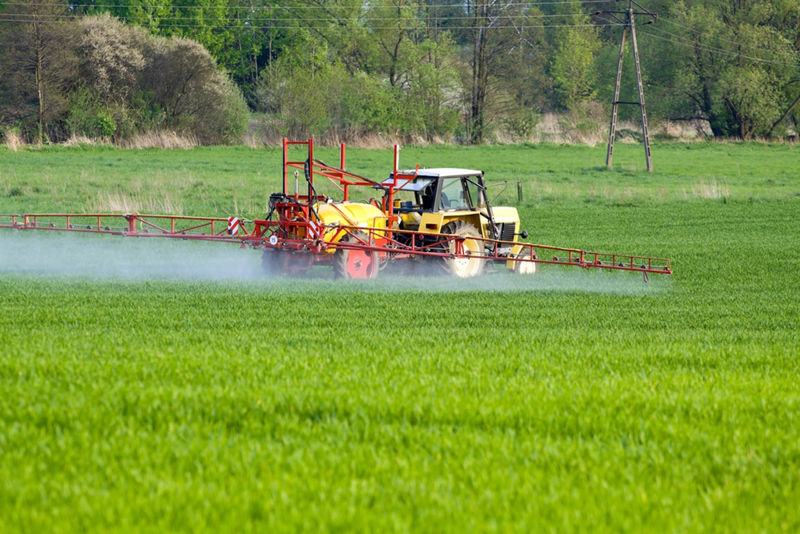
- Algae deplete all nutrients in the water, so other organisms go hungry.
- Dead algae require a lot of oxygen to decompose and aquatic animals can die due to lack of oxygen.
Wastewater from households and industry
Today, wastewater from households and industries is treated before it is discharged into the sea. Unfortunately, it's not enough. Water purification does not remove all nutrients from wastewater. There are still settlements where the wastewater is not treated at all, the treatment plants do not work properly, or they fall out of line for some time, e.g. due to an accident. In addition to that, the Baltic Sea still has a lot of pollution from the last century when regulations about water pollution were less strict.
- Due to accidents.
- Due to imperfect cleaning systems.
- In some settlements, wastewater is not treated at all.
Marine traffic
There is very heavy shipping traffic in the Baltic Sea: on average, about two thousand ships sail there at a time. Many of them carry environmentally dangerous cargo, such as oil. Ship paints and care products also often contain environmentally hazardous substances. There are requirements for ships to preserve nature, but they are not always followed. However, the most dangerous are shipping accidents, because a large amount of oil or other harmful substances may escape into the sea. Oil is deadly to marine life, especially seabirds: even a drop of oil can damage the ability of birds' feathers to hold water.
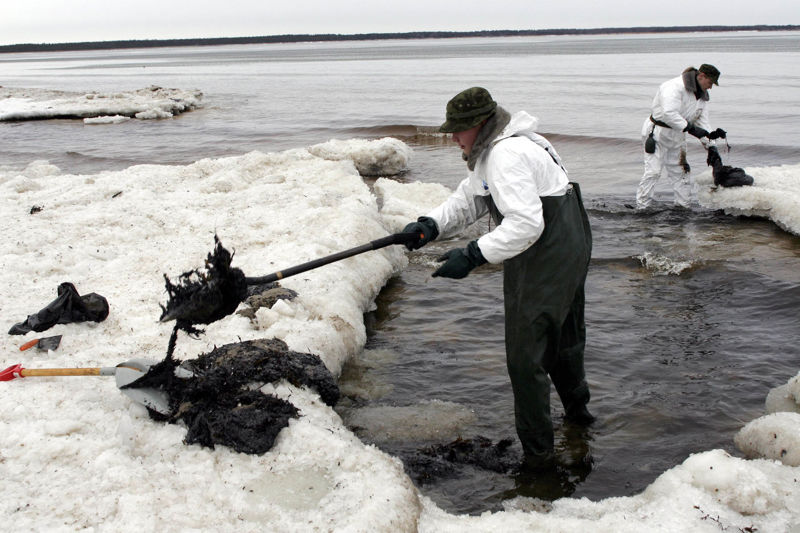
- The oil breaks the waterproof layer of the feathers.
- The bird's feathers get wet.
- Cold water cools down the wet birds.
- The wet bird adjusts the feathers with its beak to keep it warmer. This is how it swallows toxic oil.
Think!
- How do pollutants end up in the Baltic Sea?
Environmental toxins
Environmental toxins damage organisms during a long period, and their effects cannot be seen immediately. They often contain mercury or chlorine. Environmental toxins are generated during human activities (e.g. as a by-product of the production of other chemical substances, or incineration of hazardous waste). They end up in invertebrates, then fish. More environmental toxins accumulate in higher links in food chains, such as seals and eagles. If environmental toxins accumulate in animals, their lifespan will be shortened, and they may remain infertile.
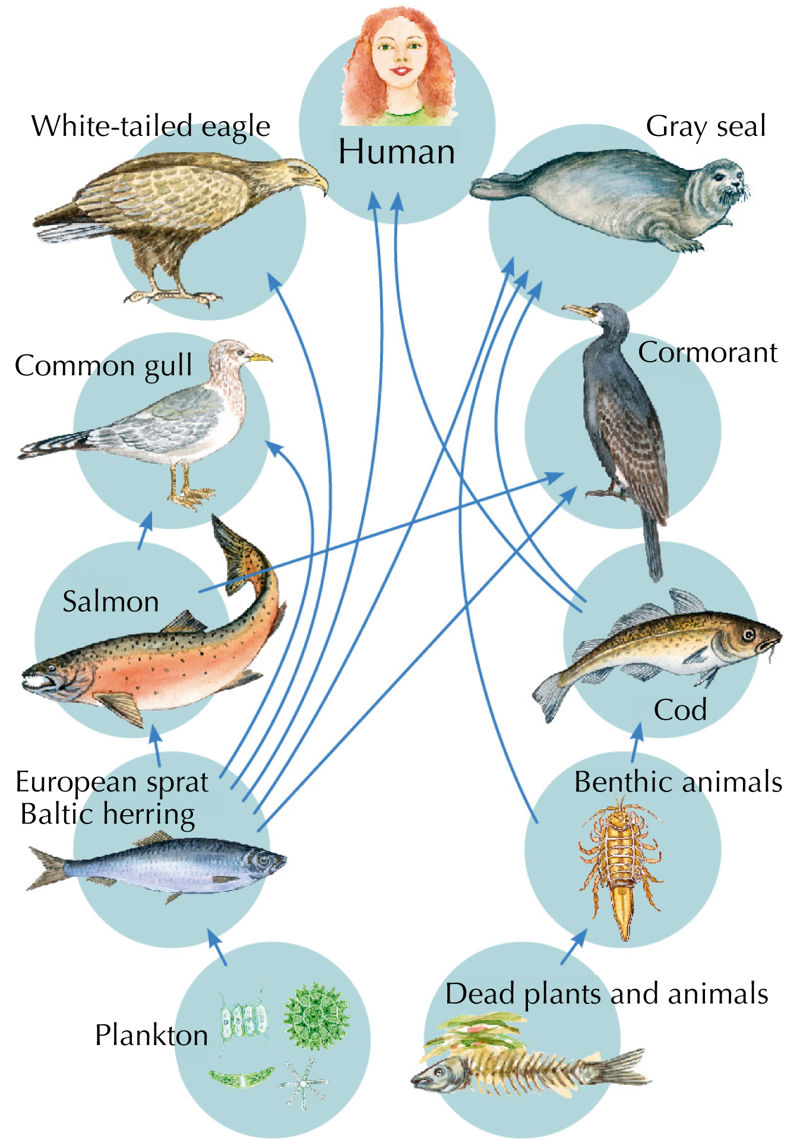
Environmental toxins ...
- endanger people
- harm organisms in the long term
- accumulate in the higher links in the food chain
- are produced because of human activities
- may cause shortening of life or infertility
The countries bordering the Baltic Sea are cooperating to protect the sea
More than forty years ago, the state of the Baltic Sea was even worse. The wastewater of many cities and settlements was not treated at all, fertilisers from the fields went directly into the water bodies, waste and wastewater from ships were also dumped directly into the sea. That is why the countries bordering the Baltic Sea have signed an international agreement called the Helsinki Convention. All these countries have promised to keep the Baltic Sea environment clean. After joining the Helsinki Convention, the Baltic Sea countries have built water treatment plants for all cities and larger settlements.
- Stockholm Convention
- Tallinn Convention
- Helsinki Convention
- Riga Convention
- Copenhagen Convention
Think!
- How can you protect the Baltic Sea?
Important terms
- environmental toxins – substances from human activity that are harmful to living organisms, accumulate in the upper links of the food chain and act slowly
I now know that…
The Baltic Sea is a semi-enclosed inland sea, so the water changes very slowly here. Pollution from agriculture, households, and industry enters the water. Shipwrecks are also dangerous, as large quantities of harmful substances may end up in the sea. All the countries bordering the Baltic Sea have agreed to take care of the cleanliness of the Baltic Sea environment.
